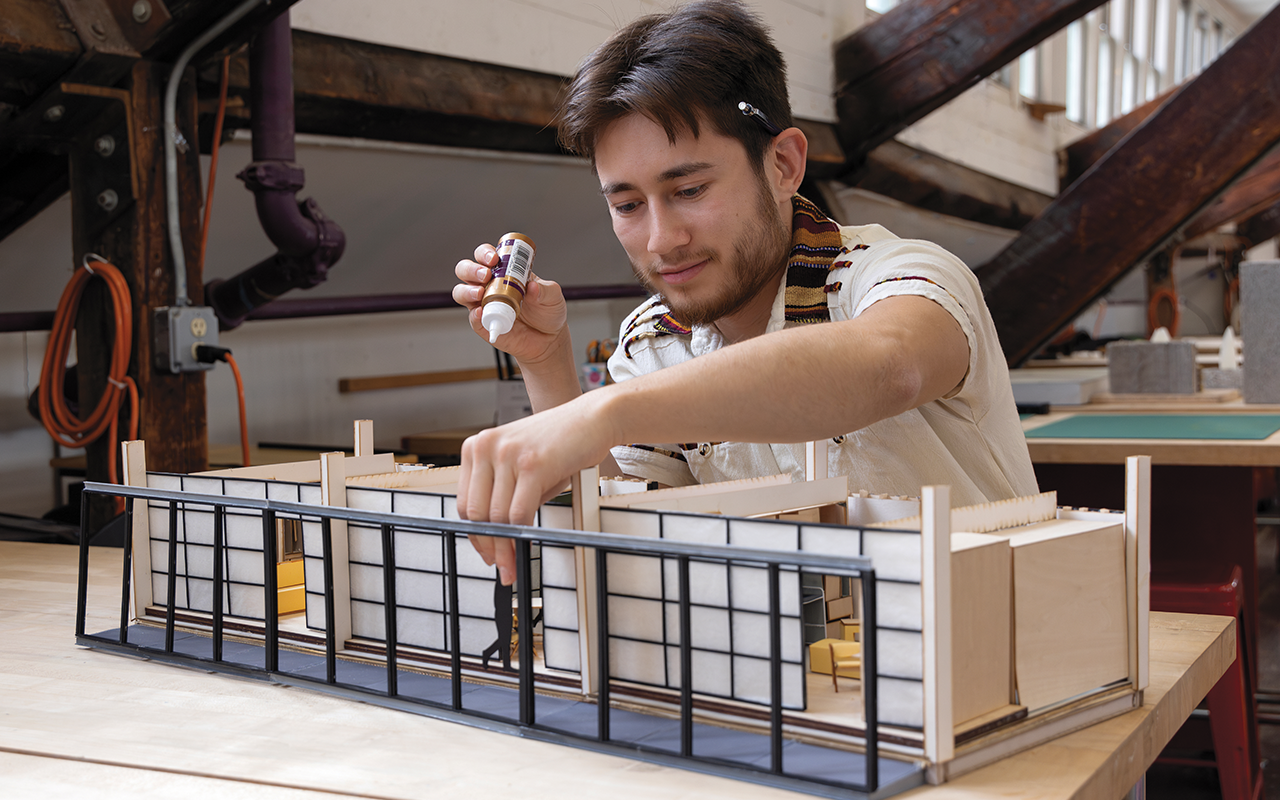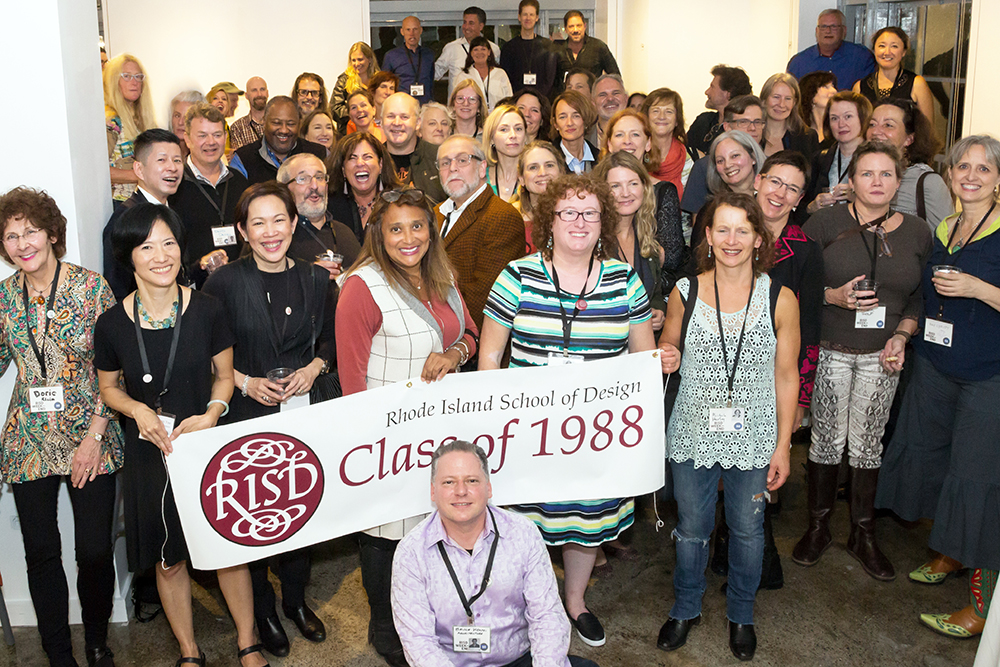
Not Just a Building
With intergenerational support, Rubelcy Herrera BArch 25 explores a holistic architecture.
Rubelcy Herrera grew up just a few miles from RISD, in Providence’s Olneyville neighborhood, but the college wasn’t on his radar until his junior year in high school when his friends suggested he look into its Architecture program.
“I didn’t really grow up in an artistic background,” says Herrera, a first-generation student whose parents immigrated from Guatemala. “I was a typical low-income kid growing up in Providence, and I spent most of my time playing soccer, hanging out with friends and being mischievous.”
Herrera’s high school peers, some of whose parents worked at Brown University and RISD, encouraged him to explore College Hill even though it seemed a world apart. He knew he wanted a challenging, growth-oriented academic experience, and considered pursuing engineering. It was not until Herrera spoke with his high school guidance counselor, who emphasized the possibilities posed by studying architecture at an art school, that he felt confident about enrolling.
“I chose RISD for its interdisciplinary focus and because Architecture is such a multifaceted major,” Herrera says. “It’s not just about a building. It’s the built environment and the surrounding ecology. It’s the furniture, the emotions, the beauty. It’s not just the aesthetic.”
Before applying, Herrera reached out to Scott Lapham 90 PH, whom he had met through a college-readiness program. Lapham walked Herrera through the then-foreign process of building his portfolio.
“I’m very grateful for his help,” Herrera says, noting that RISD alumni have been instrumental in propelling him forward. That includes Stephen Dynia BArch 83, an architect whose eponymous firm has four locations in the United States. Dynia supports Herrera’s academic journey through the RISD Scholars program, which provides significant annual tuition assistance. Herrera also receives the Peter Guimond Memorial Scholarship, which honors the structural engineer and RISD professor of Architecture who was known for his inspirational teaching style.
Now, Herrera is completing his fifth year of the Architecture program and concentrating in Nature, Culture and Sustainability Studies (NCSS) and Drawing. As he has developed his architectural thinking and practice, he has been guided by faculty from across the college.
NCSS faculty Laura Briggs BArch 82 and Jonathan Knowles BArch 84 have helped him explore how to incorporate sustainability practices in archi- tecture, while Gwen Strahl P 16 (Experimental and Foundation Studies and Drawing)encouraged him to hone his technical skills, explore concepts and different mediums and “go against typical notions of drawing,” Herrera says. He credits Architecture faculty Carlos Medellín and Anne Tate and Professor of Landscape Architecture Lili Hermann with expanding his view of architecture as a discipline and conceptualizing how policies, buildings, people and places function together.
“I’m trying to understand how the human experi- ence, built environment and natural world interact,” Herrera says. “I really appreciate how my advisers have encouraged me to think of architecture as not just a building, but an ecology. To think of the people involved, the materiality, the driving force and the motives.”
Next, Herrera plans to apply to graduate school for urban planning and building technologies “to figure out how these disciplines can also intersect to design a holistic new urban framework,” he says, and to learn more about design practices “that will enhance not just the space but also the experience for the individuals who occupy it,” he says.
Herrera is grateful, he says, that his scholarships have given him both financial freedom and time to focus on his craft and engage with his studies. He is also glad to be the beneficiary of funds created by or in memory of architects.
“Especially with my Guatemalan roots, I understand lineage and how that can be a very empowering thing. It’s incredible—these people were not only in my position themselves,” he says of Dynia and Guimond, “but understand what it means to be in an architecture program with an atypical background. That helps me envision having a successful career, and really appreciate and explore everything I can here at RISD.”

PAYING IT FORWARD
Stephen Dynia BArch 83, who received a full scholarship himself as an undergraduate, said his transformative experiences in the Architecture program fueled his desire to help other students find their way to RISD.
“I came from a sort of rough-and-tumble downtown New Haven environment, and I remember the first figure drawing class that I went to, and there was a naked woman standing on the podium, and I thought, ‘Wait a minute. This is against the law. What’s going on here?’ That’s how foreign any of that was to me...but I had some sense that I had a spark of something that made me understand the idea of what design was about...I could remember just the desire to see the world differently and make work that expresses something that is a benefit to society, by challenging the norms of the world we live in. Now, if I can help even one person do the same, I want to pay it forward.”
Words by Gillian Kiley. Images of Rubelcy Herrera by Adam Mastoon



